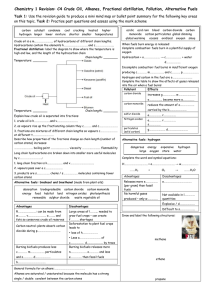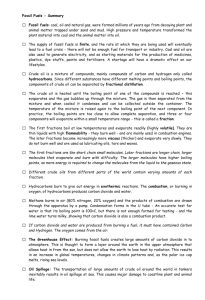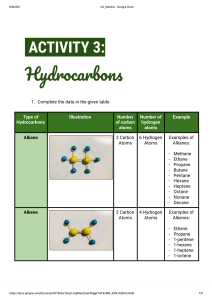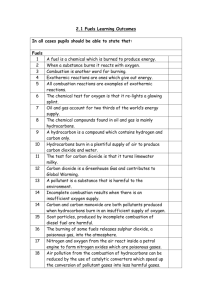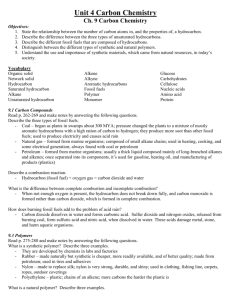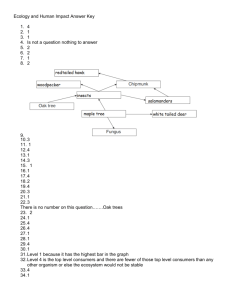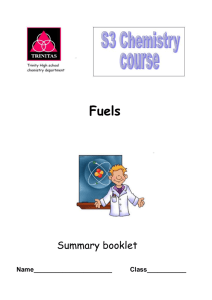Nat4Revision_Unit2_Fuels_Ans
advertisement
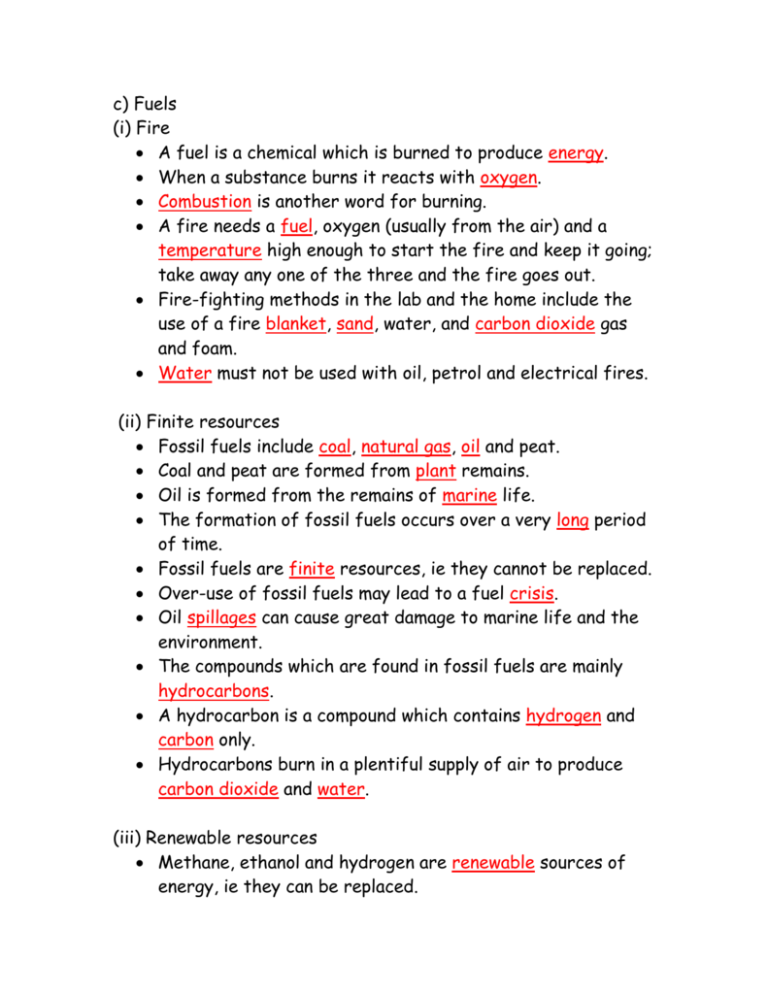
c) Fuels (i) Fire A fuel is a chemical which is burned to produce energy. When a substance burns it reacts with oxygen. Combustion is another word for burning. A fire needs a fuel, oxygen (usually from the air) and a temperature high enough to start the fire and keep it going; take away any one of the three and the fire goes out. Fire-fighting methods in the lab and the home include the use of a fire blanket, sand, water, and carbon dioxide gas and foam. Water must not be used with oil, petrol and electrical fires. (ii) Finite resources Fossil fuels include coal, natural gas, oil and peat. Coal and peat are formed from plant remains. Oil is formed from the remains of marine life. The formation of fossil fuels occurs over a very long period of time. Fossil fuels are finite resources, ie they cannot be replaced. Over-use of fossil fuels may lead to a fuel crisis. Oil spillages can cause great damage to marine life and the environment. The compounds which are found in fossil fuels are mainly hydrocarbons. A hydrocarbon is a compound which contains hydrogen and carbon only. Hydrocarbons burn in a plentiful supply of air to produce carbon dioxide and water. (iii) Renewable resources Methane, ethanol and hydrogen are renewable sources of energy, ie they can be replaced. Methane is found in biogas which can be generated by the decomposition of waste plant material. Ethanol is obtained from sugar cane and can be mixed with petrol to make a fuel for cars. Hydrogen, which can be obtained from water, is a likely fuel for the future. (iv) Important processes Crude oil is a mixture of hydrocarbons. A fraction is a group of hydrocarbons with boiling points within a given range. Fractional distillation is the process used to separate crude oil into fractions according to the boiling points of the components in the fractions. Hydrocarbons which consist of smaller molecules tend to boil more easily than hydrocarbons which consist of larger molecules. They are also more flammable and less viscous (sticky and thick). The properties of fractions (such as ease of evaporation, viscosity and flammability) are linked to their uses, e.g. lubricating oils are good at their job because they are viscous. Fractional distillation of crude oil yields more long chain hydrocarbons than we need for present-day uses. Cracking is an industrial method for producing a mixture of smaller, more useful molecules from the surplus quantity of long molecules. (v) Pollution problems Carbon monoxide (a poisonous gas) and carbon, can be produced when hydrocarbons burn in a low supply of oxygen. The burning of some fuels releases sulphur dioxide, into the atmosphere. Nitrogen and oxygen from the air can react inside a car engine to form nitrogen dioxide. Sulphur dioxide and nitrogen dioxide (two more poisonous gases) are the main causes of acid rain. Lead free/unleaded petrol has been developed to reduce lead pollution. Benzene fumes in unleaded petrol are toxic. Soot particles produced by the incomplete combustion of diesel are harmful. Air pollution from the burning of hydrocarbons can be reduced by the use of catalytic converters which convert the pollutant gases to harmless gases.
